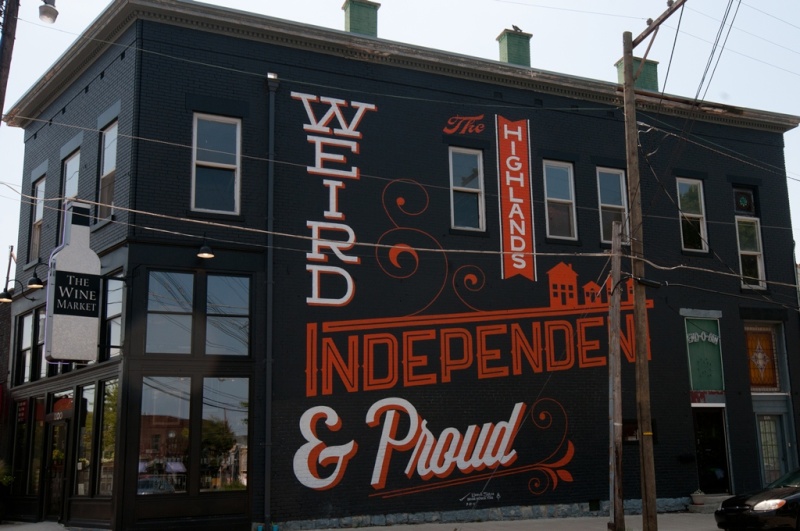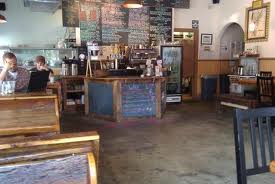The new hipster cities of America: Who's emerging as the "next Austin"?
Page 1 of 1
 The new hipster cities of America: Who's emerging as the "next Austin"?
The new hipster cities of America: Who's emerging as the "next Austin"?
The new hipster cities of America: Who's emerging as the "next Austin"?
The article states "Are other cities unscathed by the beast? Smaller, up-and-coming cities that are like how Austin was before 'we' showed up". It's the rich hypocrite baby boomers that saw how hipsters made a city like portland "cool" and "hip" and then they came in and started flipping buildings and making it unaffordable for all. Pittsburgh is a cold and crime ridden city and Detroit is downright dangerous! Burlington Vermont (my home town) or Asheville are cool and safe, but by no means affordable! I would seriously look at Wilmington, NC or Chattanooga before the others on this list. Lot's of chill PPL, more affordable and not freezing cold. VT Prog
REPOST
By Lauren Modery
Repost from: http://austin.culturemap.com/news/life/02-21-12-00-05-the-new-hipster-cities-of-america/
2.21.12 | 6:30 pm
Sometimes it feels like there is no place more hipster-plentiful than Austin, Texas. The city has become the poster child of what young creatives and entrepreneurs are discharging into this world. When you look up the word 'Austin' in the thesaurus, the words, 'old-timey facial hair,' 'your grandmother's eyewear,' 'college degree in food carting,' 'bee hive hoarding' and 'Which Wich eating' appear. It's true that there is no escaping the fauxhemian gorilla-whale that is running amok in our city.
But are other cities unscathed by the beast? Smaller, up-and-coming cities that are like how Austin was before 'we' showed up? Cities that hipsters can flock to now that other, older hipsters have crimped their style of being on the forefront of a burgeoning scene? The answer is yes.
Forget Austin, forget Brooklyn, forget Portland, forget Silver Lake. What are the cities on the verge of hipsterfication right now?Are other cities unscathed by the beast? Smaller, up-and-coming cities that are like how Austin was before 'we' showed up?
Louisville, Kentucky
Louisville is affordable, safe, artsy, and just plain weird. There is even a "Keep Louisville Weird" campaign. Bardstown Road is a mecca for all things hip and artsy. Louisville is without a doubt the most progressive of all the southern/midwestern cities. The city is also one of the most affordable hip cities in the country. Lot's of dive bars, coffee shops, vegetarian restaurants and bohemian types hanging out everywhere. There is also less government intrusion on your lives here than most states, and the police don't harass you. Live in the Highlands and stay out of the West side of town. The weather is also milder than places like Detroit and Pittsburgh but big tornadoes do visit occasionally.
Chattanooga, Tennessee
Chattanooga has been wooing the panties off the popular urbanite mag, GOOD Magazine, with tales of their new city-wide typeface and 'super green' VW plant. According to the online magazine, the city's new font, Chatype, was born from the coffee shop meeting of a brand consultant and typeface designer. The duo brainstormed about what it would be like for Chattanooga to be the most conceptually awesome city in America and — poof — Chatype was born.
GOOD also commended VW's new Chattanooga plant that turns paint waste into cement instead heading into landfills. To add to Chattanooga's green-like behavior, the city implemented human-race-eliminating 'smart lights' — LED streetlights that can respond to different environments and situations. These streetlights are controlled by the city's new fiber optic high-speed Internet that is also helping lure fleets of businesses and nerdies into this scenic Tennessee town. In addition to showing America it's the baddest mo-fo city around, Chattanooga was named one of NY Times 45 Places to Visit in the United States, along with its sister city, Space.
Asheville, North Carolina
Like Austin, Asheville is a live music Mecca featuring troves of young white men dressing like their grandfathers. But instead of finding collections of synths and keystars strewn across the land, Asheville musicians find themselves drowning in a sea of mandolins and banjos. One can often hear hipsters comparing who has the largest upright bass in coffee shops. There is always Nashville, New Orleans or Austin, but the expensive bluegrass capital of the world has slowly been earning its place as the Southeast's hipster hangout. The only issue is that costs are way up and North Face Jackets, Volvo's and trust funders are popping up everywhere driving the cost of living WAY UP!
This town of only 82,000 has been a popular go-to place for performers such as Cat Power, M. Ward, The Mountain Goats, Broken Social Scene, The Avett Brothers and Band of Horses, with the latter two having recorded albums here. And if Asheville doesn't do the trick, you can always drive down to Wilmington, NC a hip coastal town with warmer weather than Asheville and less expensive.
Burlington, Vermont / Honorable Mention: Montpelier, VT
Burlington has been known as a hippie city for a long time (Ben and Jerry's Ice Cream + Phish = Phish Food), but now that behaviors of both the hippie and hipster classes have begun overlapping, it's fair to say that this progressive city has been hipsterfied. With a population of only 42,000 people, Burlington exemplifies all the big city hipster traits in one tiny bubble — American Apparel, locally-sourced restaurants, local brew pubs, art galleries, old timey theater, delightful dive bars and, at one point, Occupy Burlington, can all be found within a few blocks of one another other.
When the hip aren't chowing down at the city's famed Farmer's Market or locally-sourced restaurants such as American Flatbread, they're hanging out at clubs and dive bars that will make you feel like you're in East Village circa 1978. Of course they get to these places via the city's popular taxi cab service, Green Cab, which boasts an all-Prius fleet. Vermont can also proudly claim the country's second ever Cartoonist Laureate with comic artist and Burlington native, James Kochalka.
Portland, Maine: Hipster Culture Surrounded by Forest
Rather than Portland, Maine, these days Brooklyn, New York, and Portland, Oregon, get all the credit (both good and bad) for modern alternative youth culture. But Brooklyn while still exciting and fun, is more of a Johnny-Come-Lately than it was a decade or two ago, and Portland, Oregon is known more for its hipster-obsessive-isolationism than its widespread impact on the culture-at-large. But if Brooklyn and Oregon aren’t the originators or modern cool than where did the plaid-class pull its inspiration from? The other Portland, the one in Maine, in New England, the one that’s quietly been rewiring the style of young Americans since the day New York became too-cool-for-school.
The reason why most people don’t think of Portland as a prime mover in our modern culture is the same reason Portland will never find itself over-hyped on par with the Epcot Centers and Williamsburgs of the world. Portland is a small, remote city carved out of the rocky coasts and thick evergreen forests of one of the country’s smallest, most remote states. The first time I visited Portland I asked a friend why none of the phone numbers pasted onto fliers, trucks and business cards had an area code on them, and she explained it was because the entire state of Maine only has a single area code— the state just doesn’t house a population big enough to require another.
The unrelenting wilderness surrounding Portland is the key to the city’s success as an American cultural hub. The city’s traditional economic engines, fishing and logging, provide a pool of references and sites for inspiration no Brooklynite would ever encounter in their day-to-day life. The city’s remote nature gives its residents the space and distraction-free living they need to pound away at their craft. And the fact Portland is buried in the middle of bear country makes it a less appealing relocation destination for the obnoxiously young and fashionable than the media-friendly dreamland of New York City’s popular outer borough du juor.
The funny thing is, even though it takes a little explaining to describe why Portland has created the prototype for modern American alternative sensibilities, it only takes about five minutes of walking around the city to realize you’ve stepped foot in the cultural equivalent of primordial ooze.
How do modern cool kids dress these days? Plaid, lots of plaid, all-plaid-everything in fact, for men and women. The cool kids then add on to their plaid with outdoors wear- a canvas jacket or parka that would look right on the shoulders of a prospector and a big hat whose style was popularized by someone who either drove a truck or made their living cutting down trees. Modern cool kid style revolves around wearing fashionable variations on garments originally worn by blue-collar workers for purely practical reasons.
This style is on sight everywhere in Portland, the city from which the bizarrely popular lumberjack look migrated out to more populous segments of the country the same way grunge style exploded out of Seattle in the early 90’s.
The modern ideal of opening a small store that focuses on selling a single hand-crafted artisanal item owes far more of its DNA to Portland’s bountiful shops owned by young tightly-focused opt-outs than it has to do with the ultra-chic boutiques of Manhattan’s high-strung over-achievers. I bet you good money that Brooklynite with a post-ironic handlebar mustache who just opened a store named “Cheese and Provisions” found more inspiration from a nautically-themed t-shirt screen printing store decked out to look like a pirate’s base located in Portland than he got from a stark-all-white Surface-To-Air shop in SoHo.
And how about modern youth culture’s obsession with food? What about modern alternative culture’s love of carefully crafted, highly imaginative restaurants fighting back at our fast food nature? Despite being a city boasting a population of a whopping 66,000 people, Portland is home to a small army of internationally recognized eateries and boasts one of the densest concentrations of restaurants, bars, and taverns in the entire country. Many of the eateries in Portland focus on serving niche culinary markets and the city hosts a staggering number of microbreweries and brewpubs.
Many other modern trends in cool kid food obsession have been fixtures in Portland for generations. Portland’s oldest farmer’s market has been operating continuously since 1768 and the city has been at the forefront of the movement towards sustainable food production since the movement first began to form in the 1970’s. A cadre of back-to-the-landers moved up to Portland and got their hooks in deep, leading to a modern foodie scene that’s been solving problems of organic production and local food sourcing long before New York City got its first major organic food store.
So what gives? Why are all of these fashion styles, artisan philosophies and local peculiarities native to Portland now mainstays of modern culture in major cities like New York City, Chicago, and Los Angeles- cities far, far, far removed from the sort of hands-on past they love to ape and emulate? It’s a rejection of slick popular culture through a jump back to a type of life that seems real, a quick grab for an idealized past that seems a lot more grounded in tangibles and solidity than our modern cutting-edge culture. In a word, all those cool kids moving to Bushwick, growing out their mutton-chops and pouring pickle-juice into their whiskey are seeking authenticity. And even though Portland certainly has its share of trying-too-hard youth-douchery, the city and the culture you experience walking its streets also offers a mainline to the sort of hard-as-nails lifestyle the guys kicking the old Polish families out of Greenpoint pretend they’d love to give a shot.
You can’t spend much time in Portland without rubbing elbows with this authentic ideal.
You can’t go to a small pine-lined diner to order a steak and eggs without some grizzled old guy sitting next to you eating the same. You can’t take a walk downtown without running into the city’s fish markets, stocked to the brim with soon-to-be-seafood caught by members of the city’s population. You can’t go to the craggy beaches without seeing the city’s still-functioning docks and shipyards. And any movement too far uptown leads you to an imposing forest.
Because as much as close proximity with the quickly-fading class of Americans who actually work with their hands may influence the style and character of Portland, as much as a deeply embedded frontier-mentality may work its way into the state’s self-identification, it’s arguably the close proximity to real wilderness that drives the unique spark shining out from Portland. The sea is wide, expansive and ever-present, cold, distant, and unforgiving. The coastline is rocky, harsh, and devoted to industry, not to sunbathing. The forest is constant, persistently encroaching on the town and waiting for you just beyond the lawns of the city limits.
Portland is the most populous urban center in a state so small and seemingly insignificant that most people never give it a second thought. But Portland’s unique conflict of past and present, young and old, city and wilderness, continues to set the modern American standard the rest of us hustle to try and keep up with.
A little about my home town of Burlington. It is Expensive! Bring your money, the ageing liberal boomer/hippies have jacked the prices up! Try Louisville or Wilmington NC instead.
Louisville - Weird, Independent & Proud

Montpelier Vermont - Hip bars and coffee shops

Wilmington, NC - Chill town - but warmer in the winter!

Portland, ME - Where hip started


Vermont Progressive- Posts : 2
Join date : 2013-07-20
Location : Montpelier, VT
Page 1 of 1
Permissions in this forum:
You cannot reply to topics in this forum
